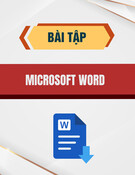
3.1 Silberschatz, Galvin and Gagne ©2009
Operating System Concepts – 8th Edition Silberschatz, Galvin and Gagne ©2009
Operating System Concepts – 8th Edition
Chapter 3: Processes

3.2 Silberschatz, Galvin and Gagne ©2009
Operating System Concepts – 8th Edition
Chapter 3: Processes
■Process Concept
■Process Scheduling
■Operations on Processes
■Interprocess Communication
■Examples of IPC Systems
■Communication in Client-Server Systems

3.3 Silberschatz, Galvin and Gagne ©2009
Operating System Concepts – 8th Edition
Objectives
■To introduce the notion of a process -- a program in execution, which forms the basis of all
computation
■To describe the various features of processes, including scheduling, creation and termination,
and communication
■To describe communication in client-server systems

3.4 Silberschatz, Galvin and Gagne ©2009
Operating System Concepts – 8th Edition
Process Concept
■An operating system executes a variety of programs:
●Batch system – jobs
●Time-shared systems – user programs or tasks
■Textbook uses the terms job and process almost interchangeably
■Process – a program in execution; process execution must progress in sequential fashion
■A process includes:
●program counter
●stack
●data section

3.5 Silberschatz, Galvin and Gagne ©2009
Operating System Concepts – 8th Edition
The Process
■Multiple parts
●The program code, also called text section
●Current activity including program counter, processor registers
●Stack containing temporary data
4Function parameters, return addresses, local variables
●Data section containing global variables
●Heap containing memory dynamically allocated during run time
■Program is passive entity, process is active
●Program becomes process when executable file loaded into memory
■Execution of program started via GUI mouse clicks, command line entry of its name, etc
■One program can be several processes
●Consider multiple users executing the same program

![Bài giảng Phần mềm mã nguồn mở [mới nhất]](https://cdn.tailieu.vn/images/document/thumbnail/2025/20250526/vihizuzen/135x160/6381748258082.jpg)


![Bài giảng Hệ điều hành: Trường Đại học Công nghệ Thông tin (UIT) [Mới nhất]](https://cdn.tailieu.vn/images/document/thumbnail/2025/20250515/hoatrongguong03/135x160/6631747304598.jpg)


![Bài giảng Hệ điều hành Lê Thị Nguyên An: Tổng hợp kiến thức [mới nhất]](https://cdn.tailieu.vn/images/document/thumbnail/2025/20250506/vinarutobi/135x160/8021746530027.jpg)




![Đề thi Excel: Tổng hợp [Năm] mới nhất, có đáp án, chuẩn nhất](https://cdn.tailieu.vn/images/document/thumbnail/2025/20251103/21139086@st.hcmuaf.edu.vn/135x160/61461762222060.jpg)


![Bài tập Tin học đại cương [kèm lời giải/ đáp án/ mới nhất]](https://cdn.tailieu.vn/images/document/thumbnail/2025/20251018/pobbniichan@gmail.com/135x160/16651760753844.jpg)
![Bài giảng Nhập môn Tin học và kỹ năng số [Mới nhất]](https://cdn.tailieu.vn/images/document/thumbnail/2025/20251003/thuhangvictory/135x160/33061759734261.jpg)
![Tài liệu ôn tập Lý thuyết và Thực hành môn Tin học [mới nhất/chuẩn nhất]](https://cdn.tailieu.vn/images/document/thumbnail/2025/20251001/kimphuong1001/135x160/49521759302088.jpg)


![Trắc nghiệm Tin học cơ sở: Tổng hợp bài tập và đáp án [mới nhất]](https://cdn.tailieu.vn/images/document/thumbnail/2025/20250919/kimphuong1001/135x160/59911758271235.jpg)


![Giáo trình Lý thuyết PowerPoint: Trung tâm Tin học MS [Chuẩn Nhất]](https://cdn.tailieu.vn/images/document/thumbnail/2025/20250911/hohoainhan_85/135x160/42601757648546.jpg)


